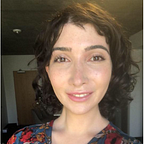Glass Oracles: The Art and Danger of Prediction (Part 2)
It’s been a week. I got quoted in Bloomberg again for some reason, talking about meme stocks again.
As I discussed in my previous post, the art of prediction is a dangerous game. It’s quite easy to fall prey to biases, especially given the natural optimism of humans and desire for explanation of pure randomness.
Let’s take a step back. What does prediction even mean?
Correlation and Confusion
Most echo the axiom “correlation does not imply causation” without really understanding what it means.
Correlation is simply the relationship between two variables. These can be logically related variables, and often are. We can construct a simple example of correlation looking at the relationship below between electricity bills and ambient temperature:
In this contrived example, we’re looking at the relationship between background temperature (measured in Celsius) and the monthly electrical bill (measured here in rupees). This shows a clear positive correlation — as temperature increases, so does the electrical bill. This intuitively makes sense —…
